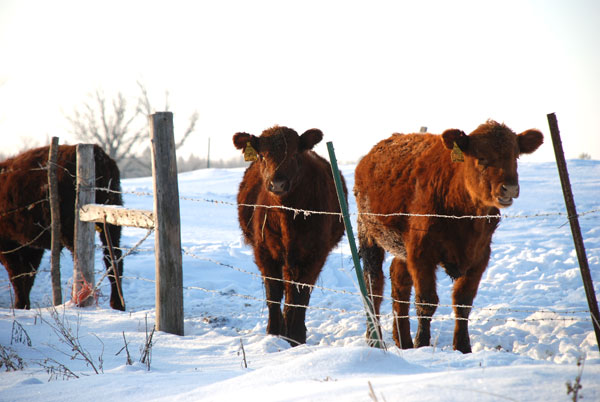Beware of winter risks when grazing stockpiled forages
Whether grazing stockpiled annual forages or native range, be ready for heavy snow.
September 22, 2016

Grazing stockpiled forages, whether annual crops or native range, offers many benefits in extending the grazing season. Among them is that annual forages can be grazed standing or windrowed.
“In our research, we used windrows, but a producer may see benefit in leaving it standing, hoping there won’t be snow accumulation. A heavy snow will lay it down,” says Bart Lardner, Western Beef Development Center, University of Saskatchewan.
“Many producers leave it standing until snow prevents grazing. If some forage is not utilized, you can put cattle out there in the spring or use it as a calving pasture when cows are looking for something besides hay,” he says.
“I suggest strip grazing stockpiled forage, to minimize waste. In a large pasture, I recommend giving cattle access to about 3 to 4 days’ worth at a time. If there’s a legume in the pasture, you want to minimize selective grazing and risk for bloat. Using portable electric fence usually works best.”
Windrowing adds cost, but there is more nutrient quality captured when cutting forage at optimum stage of maturity rather than having it continue to mature and dry out. “If you leave it standing, you lose some quality. Cutting it at a higher quality stage tends to keep that stage; you are preserving it in the windrow. During those first snows, you see cattle opening a windrow and it’s still green—like opening a bale of hay,” Lardner says.

70+ photos showcasing all types of cattle nutrition
Readers share their favorite photos of cattle grazing or steers bellied up to the feedbunk. See reader favorite nutrition photos here.
When grazing native range, the biggest risk is heavy snow, or snow that melts and freezes again, creating a crust. “Stockpiled forages reduce costs, keeping cows grazing longer, but you increase risk. The biggest risk in the West, especially at high elevation sites, is deep snow,” says Tim DelCurto, Nancy Cameron Chair of Animal and Range Sciences at Montana State University.
DelCurto was previously at Oregon State University’s Eastern Oregon Agriculture Center. “When we studied winter grazing in the Great Basin, it worked great the first three years, and we had a field day at our Burns, Oregon station. A large group of producers attended, and some range conservationists from the Bureau of Land management (BLM). Several of them converted to winter grazing permits. Then we had one of the worst winters on record, with deep snow, and it didn’t work very well.”
“Cattle can do fine grazing rangelands in snow up to 12 inches, as long as bunch grasses are sticking above the snow, and cows will utilize snow for water. The situations that don’t work are when snowfall covers the grass or becomes crusted to where cattle can’t graze down through it,” he says.
Heather Smith Thomas is a rancher and freelance writer based in Salmon, Idaho.
You might also like:
6 tips for proper electric fence grounding
9 things to include in your ag lease (that you better have in writing!)
Top 10 issues facing beef producers
Market outlook: Are cattle traders trying to catch a falling knife?
About the Author(s)
You May Also Like


.png?width=300&auto=webp&quality=80&disable=upscale)
